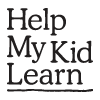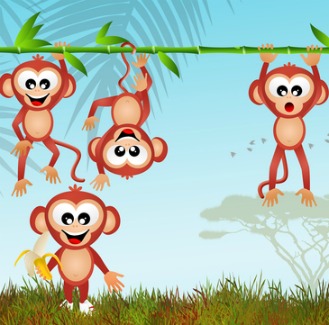What to do with this activity?
Say or sing rhymes and songs that have numbers in them. These help your child to get familiar with numbers.
One, two, three, four, five, once I caught a fish alive,
Six, seven, eight, nine, ten, then I let it go again.
Why did you let it go? Because it bit my finger so.
Which finger did it bite? This little finger on my right.
You can count with your child's fingers, and wriggle their little finger for the last line. Here is a version of the song on Youtube.
Enjoy another counting rhyme called "Five little monkeys".
Five little monkeys, sitting on a tree.
Teasing the crocodile - you can't catch me, no you can't catch me.
When along came the crocodile, quiet as can be and... SNAP!
There were 4 little monkeys sitting on a tree.
Teasing the crocodile... (continue until just 1 little monkey is left)
One little monkey sitting on a tree.
Teasing the crocodile - you can't catch me, no you can't catch me.
When along came the crocodile, quiet as can be and...SNAP!
There were no little monkeys sitting on the tree.
Just one fat crocodile, happy as can be.
This is spoken rhyme with actions. For teasing the crocodile put your thumbs near your ears and wiggle your fingers. For the crocodile creeping up, put your hands together and move them like a snake. For SNAP put your hands together in a big clap.
-
Why am I doing this?
Maths is more than working with numbers. It also consists of shape and space, patterns, measuring – things you do and come across in everyday life. When children begin to learn formal maths at school, they are building on a foundation of early numeracy learning from home. Even though they may not even be aware of it, parents and children engage in numeracy activity as part of their everyday lives.
-
How can I do more?
Always teach numbers in a natural way through everyday activities and play. Count steps on a stairs, food in your shopping trolley or cows in a field. Compare things when talking big or small, long or short, older or younger and faster or slower: “You carry the small box and I’ll take the big one.” Use the words – up and down, over and under, near or far, more or less when talking to your child. Talk about the shapes of everyday things. Ask your child what shapes they can see around the room they’re in.
Rate this activity
![]()
![]()
![]()
![]()
![]()
Based on 32 reviews
How would you rate it?
1 = Poor, 5 = Great.



